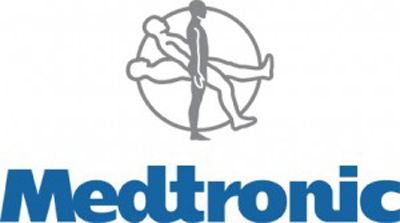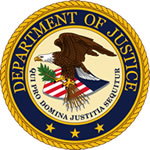 As we previously reported, the Supreme Court granted certiorari in the Medtronic Inc. v. Boston Scientific Corp. case, where the sole issue on appeal is whether the burden of proof shifts in a declaratory judgment action brought by a licensee under Medlmmune, such that the licensee has the burden to prove that its products do not infringe the patent. The Federal Circuit had decided this issue in the affirmative, thereby requiring Medtronic as the licensee to establish non-infringement of the licensed patents. As we suggested, it can be presumed that the Supreme Court disagreed with this decision (because it agreed to hear the case), so the burden will likely shift back to the patentee to prove infringement in the MedImmune context.
As we previously reported, the Supreme Court granted certiorari in the Medtronic Inc. v. Boston Scientific Corp. case, where the sole issue on appeal is whether the burden of proof shifts in a declaratory judgment action brought by a licensee under Medlmmune, such that the licensee has the burden to prove that its products do not infringe the patent. The Federal Circuit had decided this issue in the affirmative, thereby requiring Medtronic as the licensee to establish non-infringement of the licensed patents. As we suggested, it can be presumed that the Supreme Court disagreed with this decision (because it agreed to hear the case), so the burden will likely shift back to the patentee to prove infringement in the MedImmune context.
 The United States filed an Amicus Curiae brief on August 2, 2013, taking just this position -- that the burden of proving infringement should never shift from the patent holder. Most of the arguments made by the Solicitor General, however, do not adequately take into account the unique nature of this particular type of declaratory judgment jurisdiction created by the Supreme Court's MedImmune decision. The brief does, however, highlight a few flaws in the Federal Circuit's reasoning. In any event, it is always worthwhile to consider any brief submitted by the Solicitor General of the United States.
The United States filed an Amicus Curiae brief on August 2, 2013, taking just this position -- that the burden of proving infringement should never shift from the patent holder. Most of the arguments made by the Solicitor General, however, do not adequately take into account the unique nature of this particular type of declaratory judgment jurisdiction created by the Supreme Court's MedImmune decision. The brief does, however, highlight a few flaws in the Federal Circuit's reasoning. In any event, it is always worthwhile to consider any brief submitted by the Solicitor General of the United States.
The first argument presented in the brief was that "the burden of proving patent infringement generally rests with the patent holder." This is no different, however, than the Federal Circuit acknowledged in the case below. Unfortunately, the Solicitor General's brief did not take into account the procedural uniqueness of MedImmune declaratory judgment actions. Instead, it cited to several Supreme Court and Federal Circuit cases that predate the MedImmune case for the proposition that "the burden to prove infringement never shifts . . . ." Imhaeuser v. Buerk, 101 U.S. 647, 662 (1880). The brief also noted that this is the first time since the enactment of the Declaratory Jurisdiction Act that an "accused infringer" has had the burden of proving non-infringement. But the use of the term "accused infringer" in the brief highlights the appropriateness of this argument in this context -- the declaratory-judgment plaintiff is a licensee, and therefore is not necessarily being accused of infringing. Rather, the licensee has entered into an agreement by which it has a right to practice the patented technology. Therefore, even though it cannot be presumed that the declaratory-judgment plaintiff has conceded infringement because of the existence of a license, the fact that Medimmune creates a unique situation must be acknowledged.
To highlight this problem, the Solicitor General takes the position that if a declaratory-judgment plaintiff must prove non-infringement, it would need "to identify and negate every conceivable theory on which the product could infringe." This appears to be an exaggeration. In fact, in order for a licensee to have a good-faith basis to file a Medimmune-type non-infringement action, it should have at least one reason why its product does not infringe. And, this single reason may be enough to satisfy the burden of proof, even if the patent holder presents contrary (but not as persuasive) evidence. The idea that the declaratory-judgment plaintiff would have to anticipate and respond to every potential theory of infringement, regardless of how unlikely, cannot be correct.
The second argument in the brief filed by the United States was that "[t]he declaratory-judgment posture does not require shifting the burden of proof otherwise associated with the parties' underlying substantive dispute." With this argument, the Solicitor General appears to be saying that there is no reason under the rationale for declaratory-judgment jurisdiction to support a switching of burdens. To support this proposition, the brief points out that the Supreme Court has repeatedly said that the operation of the declaratory judgment act was only procedural in nature -- it allowed the establishment of jurisdiction in cases where it might not have existed previously. Instead, the reasoning went, if the rule established below stands, the purpose behind this act will be disserved. This is because the act was supposed to establish a mechanism by which the patent enforcement suit could be resolved without subjecting the declaratory-judgment plaintiff to potential liability. By changing the burden of proof, the Solicitor General pointed out, it would change the fundamental nature of that patent enforcement suit. Correspondingly, it would change the procedural nature of the Act.
The third argument made in the Solicitor General's brief was that "[t]he existence of a license does not shift the burden of proving patent infringement from a patent holder to its licensee." The fact that the parties entered into a license agreement does not alter the analysis for determining whether the product in question falls within the scope of the patent. Instead, the agreement only precludes the patent holder from obtaining damages or an injunction.
The brief pointed out that the Federal Circuit was incorrect when it said that the licensee was the only party that was seeking the aid of the Court. In other words, the licensee was not the only party seeking to "disturb the status quo." The Solicitor General noted that Medtronic was paying money into escrow, which the patent holder would only receive if it was successful defending against the action. Therefore, the argument goes, the patent holder also stood to benefit from the resolution of this case. The potential flaw in that argument is that it was the license itself in that case which required the escrow payments and such payment are not inherent to such license agreements. Therefore, to create a rule that took this into account would not necessarily be applicable in all situations.
The Solicitor General was correct, however, in that the status quo had already been disturbed. The device in question in this case was after-arising, meaning it did not exist at the time the parties entered into the agreement. Instead, the patent holder had to affirmatively state that this new product fell within the scope of the patents, and therefore within the scope of the agreement. This was a disruption of the then-current status quo under the license. It is reasonable, therefore, to view Medtronic's efforts in bringing the suit as an attempt to return the state of the parties to the status quo.
Probably one of the better arguments made by the Solicitor General centered on the chilling effect that this decision might have on a licensee that wishes to bring such an action. The Supreme Court established MedImmune declaratory judgment actions to make it easier for licensees to challenge the licensed patents. If the Federal Circuit's burden shifting were to stand, licensees might think twice before taking advantage of this process. Therefore, the United States appears to be hoping that the same policy concern that prompted the Court to decide MedImmune in the first place will convince the Court to reverse the Federal Circuit's Medtronic decision.